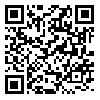BibTeX | RIS | EndNote | Medlars | ProCite | Reference Manager | RefWorks
Send citation to:
URL: http://ioh.iums.ac.ir/article-1-216-en.html
Background and aims
Carpal tunnel syndrome (CTS) is one of the most common peripheral neuropathies. Common risk factors of CTS include hand repitetive movements, awkward posture of wrist and forceful exertions. In Iran, little study has been conducted to determine occuopations associated with high prevalence of CTS. Since many manual occupations involve repititive hands and fingers motions, high prevalence rate of CTS is predicted. This epidemiological study was carried out to determine sex, age, occupation and prominant hand distribution of CTS among patients with CTS refering to Chamran and Nemazi hospitals, Shiraz.
Method
In a passive survaillance, data were collected from 305 files of patients with CTS refering to Chamran and Nemazi hospitals from 2002 to 2006. Age, sex, address and phone number of the patients were taken from their files. In the next stage, they were contacted either
by person or by telephone and detailes about their occupations and tasks were asked.
Results
Among 305 studied cases, 224 were female (73.4%) and 81 were male (26.6%). Patients' age ranged from 14 to 81 years with mean of 43±14.38 years. Totaly, 286 of paitients were contacted. Among contacted cases, 169 were housewives (59.1%), 45 were office employees (15.7%), 43 were workers (15%), 16 were weavers (5.6%) and 10 were taylors (3.5%). Number of CTS cases in right, left and both hands were 176 (60.1%), 77 (26.3%) and 40 (13.7%), respectively. Surgical procedure were conducted on 194 of cases. Other types of treatments were administrated for the remain 11 cases.
Conclusion
Since 74% of CTS cases were observed in female, it could be declared that due to physical body condition and execution of precise repititive tasks, women were more at risk of CTS. Among occupations, 60% of cases occured in housewives. Based on the results, in order to prevent CTS occurence, it is recomended to pay more attention to women and desiging appropriate hand tools (particularly hand tools used in kitchen).
| Rights and permissions | |
 |
This work is licensed under a Creative Commons Attribution-NonCommercial 4.0 International License. |





